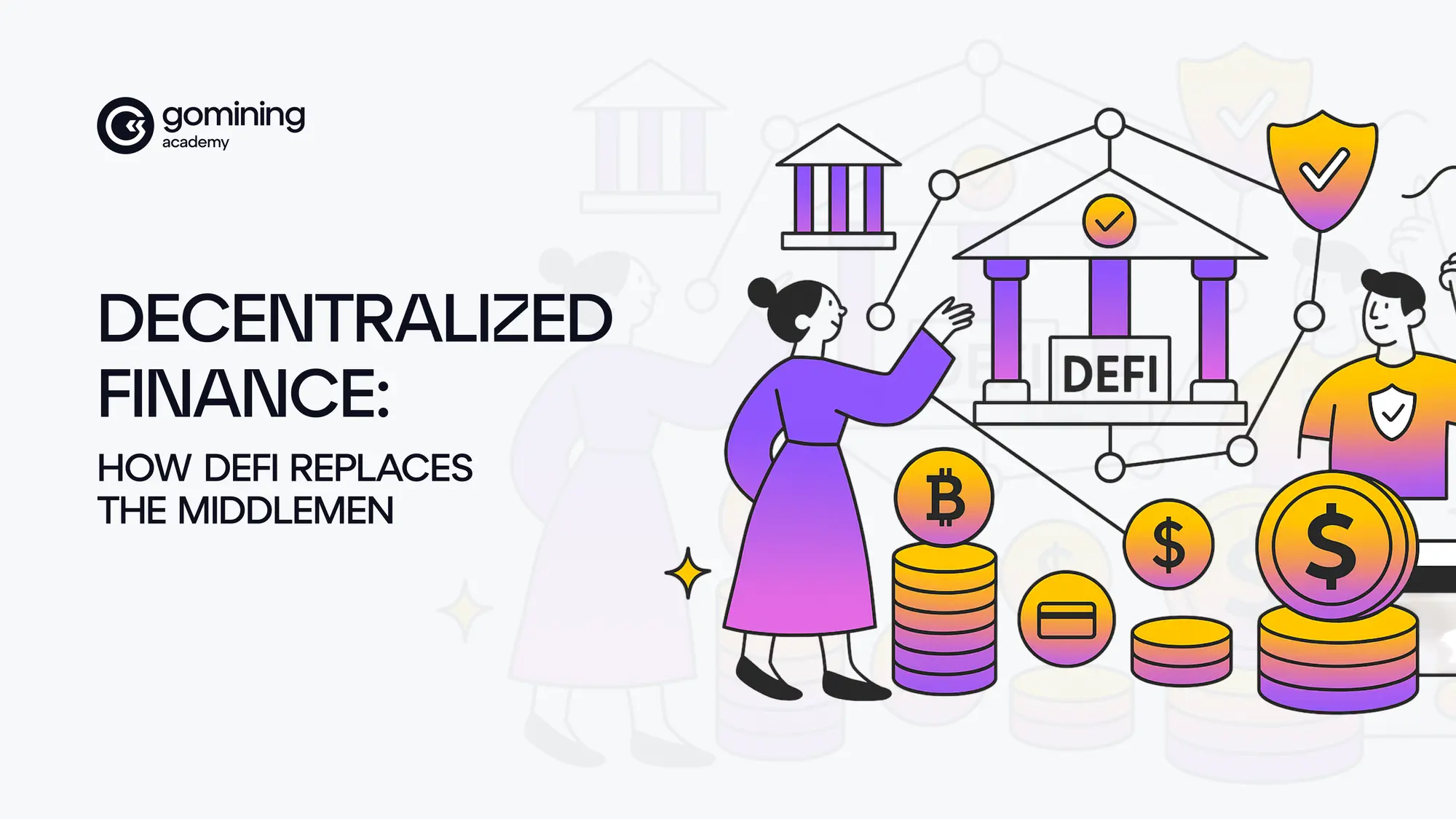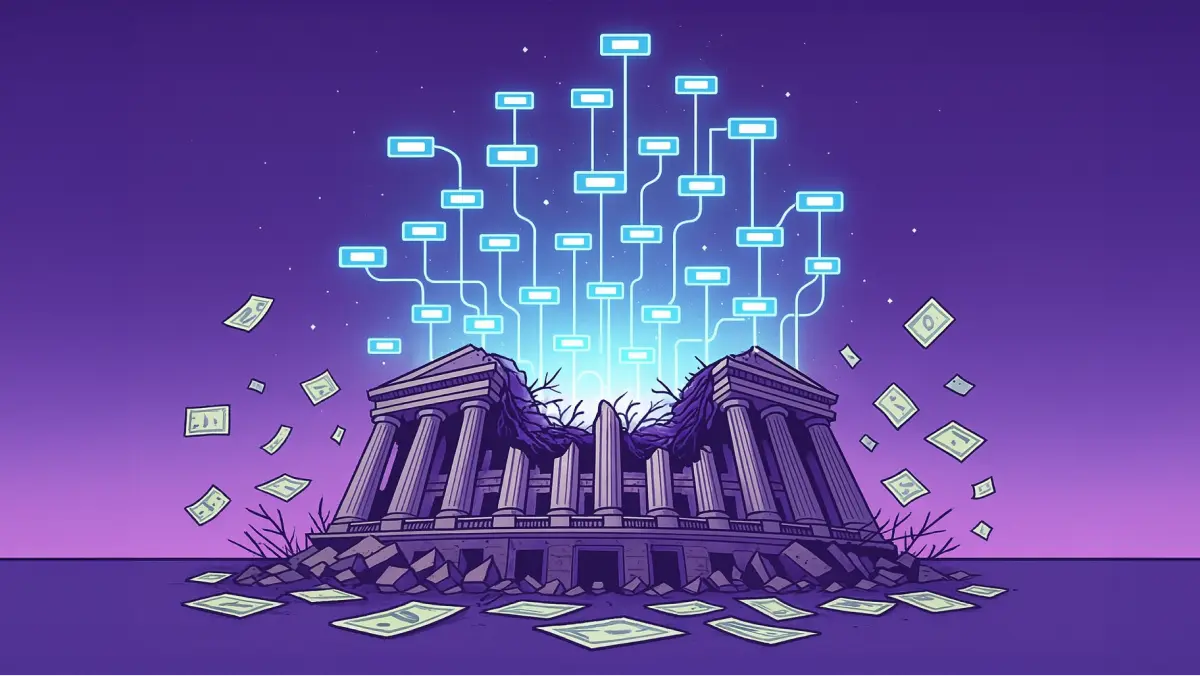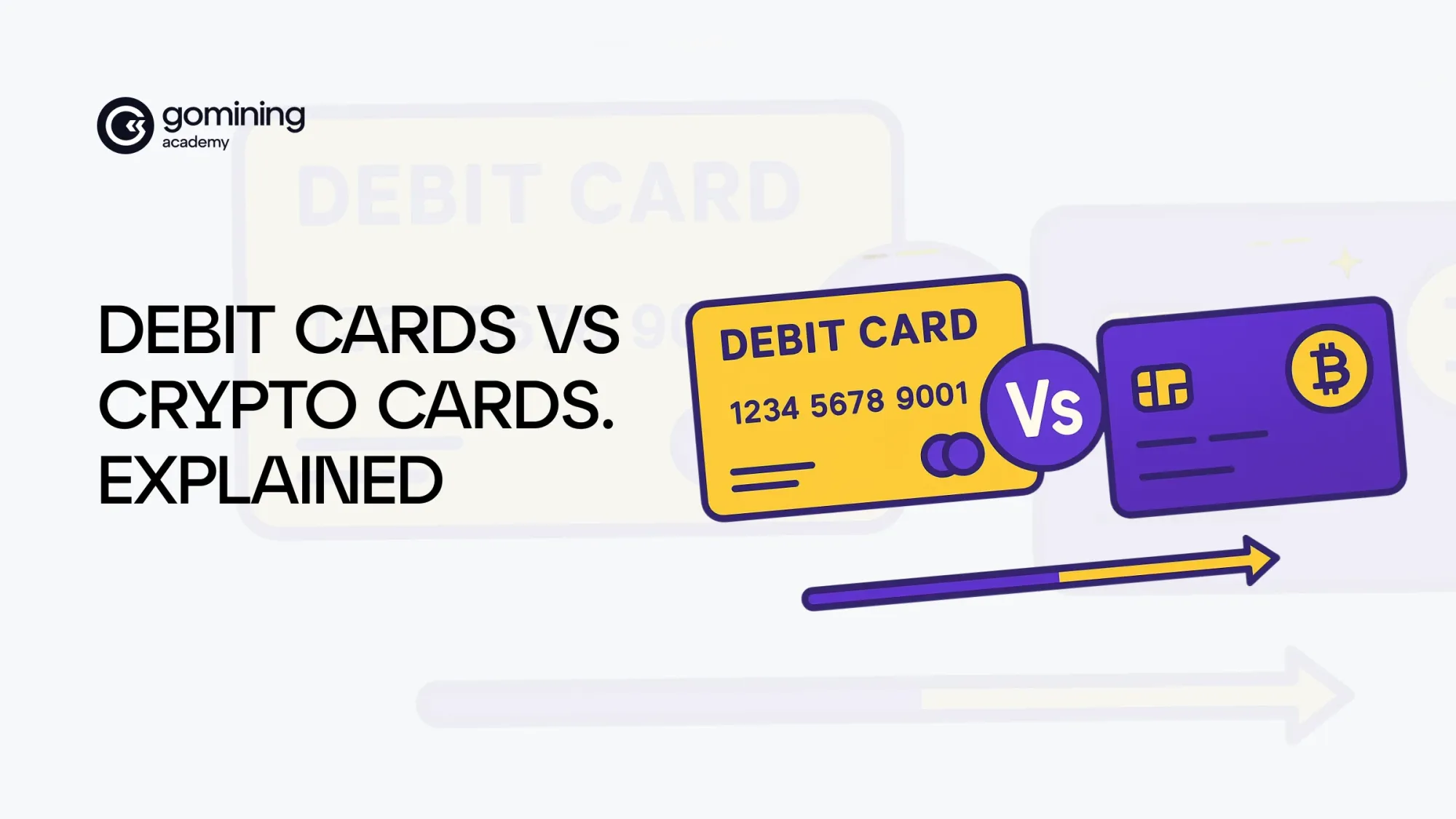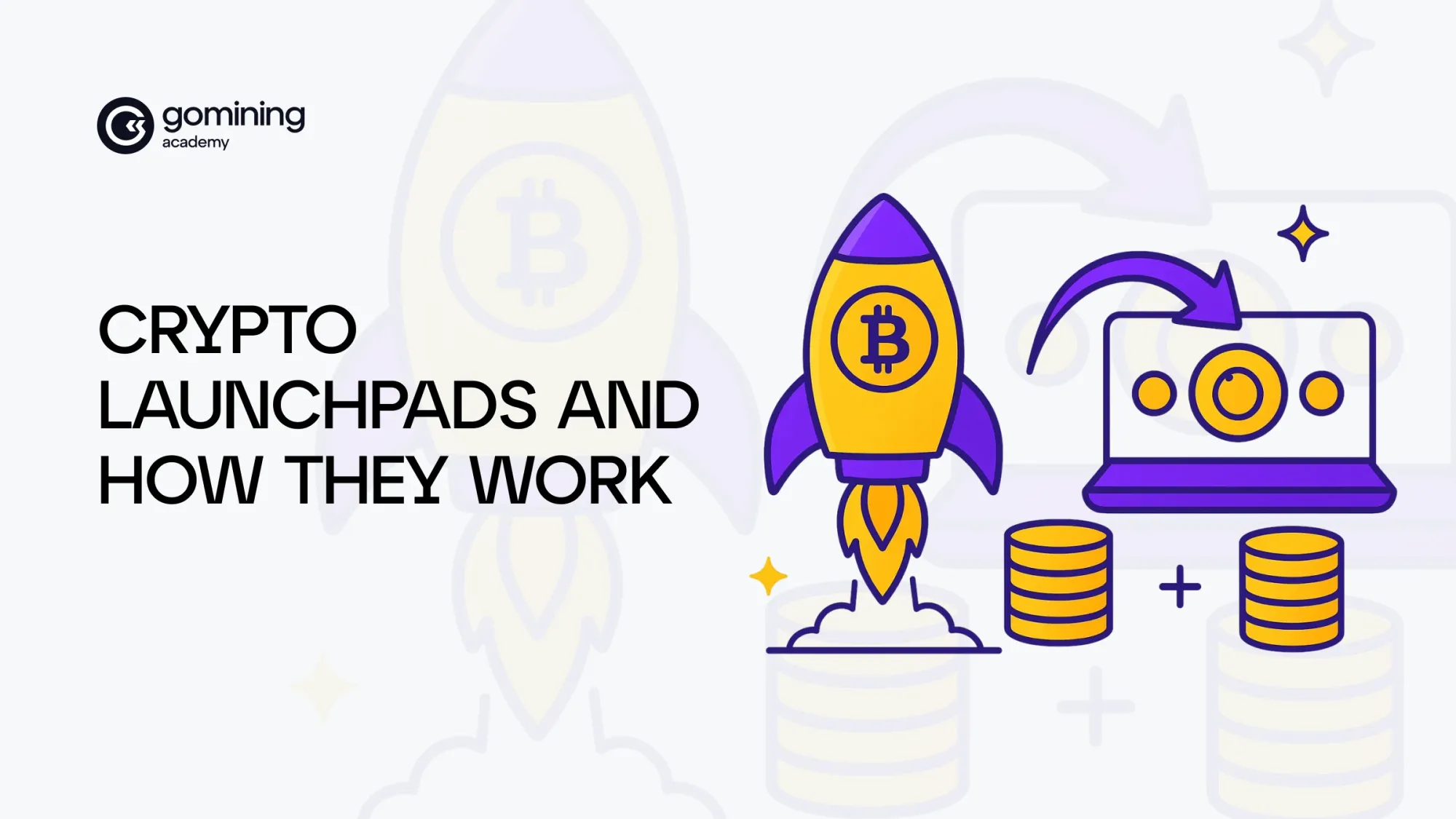Decentralized Finance: How DeFi Replaces the Middlemen

Ever wonder why we hand over full control of our money to institutions we barely understand? For decades, we’ve been told to trust banks, but trust isn’t free—and it’s certainly not foolproof.
We trust banks to safeguard our money, process transactions correctly, and be there when we need them – but history has shown they don’t always live up to it. Banks can freeze accounts, governments can impose capital controls, or technical outages can halt access to funds.
When the 2008 financial crisis hit, for example, individuals paid the price for the missteps of big centralized institutions. In short, the traditional paradigm has grown long in the tooth: it’s slow, costly, and often exclusive. Relying on central middlemen means trusting them with everything
It’s time for a new approach—one that removes the middlemen and puts power back in your hands. This article is your guide to the world of DeFi, a radical technological movement aiming to reinvent traditional finance.
Table of Contents
- Decentralized Finance
- What is Decentralised Finance?
- Defi Protocols
- Why Decentralized Finance Matters
- Decentralized Finance Perks, Pitfalls & Plot Twists
- Tokenised Mining — Where DeFi Meets Real-World Hash-Power
- Final Thoughts: Power to the People
Decentralized Finance: Built on Code, Not Corporations
Decentralized finance (DeFi) offers a radical rethink: a system where you’re not just a customer—you’re in control. No banks, no gatekeepers, just smart, transparent technology that lets you interact directly with the financial world on your own terms.
DeFi is a global, open financial playground where anyone with an internet connection can lend, borrow, trade, and more – all through a peer-to-peer system of smart contracts rather than traditional banks. Welcome to finance, reimagined.
What is Decentralised Finance?
DeFi is the financial engine of Web3 —the next evolution of the internet that doesn’t just connect people and data, but value. Web1 was read-only. Web2 lets us post and share. Now, Web3 brings ownership, decentralization, and direct interaction—with DeFi powering how money flows through it.

Let’s say you’ve used Airbnb to book a cozy cabin or Uber to catch a ride. You’re connecting directly with someone—a host, a driver—but there’s still a big company in the middle handling the rules, processing payments, and taking a cut.
Decentralized Finance removes that company entirely. That said, it's still a new and rapidly evolving space, and governments around the world are exploring how to regulate it—so the landscape may change as decentralized finance matures.
DeFi would make it possible to rent that cabin directly from the host, no Airbnb involved. The price, terms, and payment? All managed by neutral, automated code. That’s what Decentralized Finance does for money. DeFi runs on a decentralized network: thousands of computers around the world working together to verify and record transactions. There’s no single server or boss. Instead, the network follows a shared rulebook called the blockchain — a public ledger anyone can view, but no one can secretly change.
Every time a transaction happens, it gets added as a block in the chain, sealed and visible to all. If someone tries to tamper with it, the rest of the network rejects it. That’s what makes the DeFi ecosystem secure, transparent, and resistant to censorship.
The blockchain takes the place of the middleman, and smart contracts act as the rulebook. Smart contracts are tiny programs that say, "If Alex pays, then Bob gets paid" — and they do it automatically, without a company skimming fees or holding the power to block your account.
So instead of trusting a platform, you trust the code. And instead of profits going to a corporation, they stay with the people actually using the system. That’s what decentralization in DeFi really means: no central company running the show. The network itself is the platform—and it belongs to everyone.
Now let’s break it down a little more.
When you send money through a traditional bank you encounter delays, forms, fees, and business hours. With DeFi, you just open a crypto wallet and send value straight to your friend. No middlemen, no paperwork, no waiting.
That’s the power of decentralized finance.
And here’s where DeFi apps, known as DeFi protocols, come in. Think of them like the apps on your phone—but instead of living in the App Store or Google Play, they live on the blockchain.
Defi Protocols
The DeFi definition of a protocol is a decentralized application (dApp) that runs on a blockchain; many of these protocols power decentralized exchanges. These exchanges rely on smart contracts to enforce their rules—self-driving financial robots that follow simple logic: “If X happens, do Y.”
Let’s make it real with a story:
👩 Alice wants to send money to her friend Bob. 🚑 Normally, she’d go through a bank—with fees, delays, and red tape. 🪙 With DeFi? Alice opens her crypto wallet and sends digital dollars (like USDC) straight to Bob. It lands in his wallet in minutes.
But let’s say Bob wants euros, not dollars. No problem. There are many decentralized exchanges that can automatically swap Alice’s USDC for a euro-pegged token and send it to Bob—no banks, no currency desks.
How? With something called a liquidity pool. It’s like a digital vending machine stocked with pairs of tokens. Other users have filled it with money, and when Alice makes a trade, the smart contract does the math and completes the exchange. Those who supplied the pool earn a small fee—just like Airbnb hosts earn money when someone stays. This nonstop swapping is the engine of DeFitrading.
It all happens instantly and transparently. Alice and Bob don’t need to know or trust each other; they just trust the code. This is why people say decentralized finance is trustless: not because trust disappears, but because it shifts from middlemen to open-source code and a network anyone can verify.
Oh, and what about fees? Yes, there are some. Every transaction on DeFi usually comes with a network fee (a.k.a. A gas fee) that keeps the system running. The cost varies with network traffic—sometimes a few cents, sometimes a few bucks—but it’s still often faster and cheaper than using a traditional bank.
That’s how DeFi works: global, user-powered, and built for anyone with a smartphone and the curiosity to explore.
Why Decentralized Finance Matters
Accessibility and Empowerment for All
More than 1.4 billion adults around the world still don’t have access to basic financial services—meaning no bank account, no mobile money, and no easy way to store or move money safely, leaving them stuck holding cash under the mattress. Even those who are “banked” often endure low interest rates on savings (sometimes near zero) while paying high interest on loans and credit. The system can feel one-sided: the middlemen reap the benefits (fees, interest spreads) while regular people navigate hoops and hurdles.
Decentralized Finance removes barriers and middlemen, DeFi can bring financial services to people who’ve never had them. Someone with a smartphone in a remote area can now access a global market or secure a microloan without a local bank infrastructure. That’s profoundly empowering. It’s not just a buzzword; it can change lives.
Imagine a small farmer who normally couldn’t get a loan to buy better seeds because no bank serves his village – with DeFi, a microloan platform could allow anyone in the world to fund him (with crypto collateral in place to manage risk) directly. That kind of peer to peer system is what fuels the passion behind decentralized finance.
DeFi Applications are open 24/7 to anyone with an internet connection. It doesn’t matter where you live or what your credit score is – there’s no gatekeeper to say “no, you can’t participate.” This is a game-changer for the unbanked and underbanked populations.
For example, a young developer in Nigeria or a shopkeeper in Vietnam can access the same global DeFi lending pool as an investor in New York. Need a loan or want to earn interest? In DeFi, you don’t have to beg a bank manager; you just interact with a protocol. This peer-to-peer system creates opportunities where traditional finance might shut doors.
Greater Control Over Your Money
In DeFi, you hold the keys to your money—literally. That means you fully own your assets, unlike with a bank account where the bank technically holds your funds for you.
Transparency and Trust Through Code
“Why does sending my own money cost so much and take so long?” If you’ve ever asked this, you’re not alone. In traditional finance, a lot happens behind closed doors. You might not know how a bank is using your deposits, or why a transfer takes so long, or what fees will hit you until they do. In the traditional financial system, middlemen – like banks, payment processors, and brokers – sit in the middle of almost every transaction.
Want to send money abroad? It might hop between multiple banks, each taking a fee and a day or two to process. In fact, globally sending remittances (money abroad) costs an average of about 6% in fees.
That means if you send $100 to a family, about $6 vanishes in transit as fees! And if it’s a weekend or holiday, banks make you wait until they’re open to push the paperwork. This old paradigm is like relying on a slow postal service in the age of email
Alright, imagine this: instead of sending money through a bank that takes a cut, asks a bunch of questions, and makes you wait a couple of days, you send it straight to your friend using just your phone and a crypto wallet. No forms, no middlemen, no “business hours.” That’s decentralized finance at work.
DeFi, unlike traditional finance, runs on transparent blockchain ledgers. Every transaction is public. You can go look up exactly what’s happening in a protocol’s smart contract: how much is in a liquidity pool, what the rules are, and even track transactions (albeit pseudonymously – you see wallet addresses, not real names). This transparency reduces the need for blind trust. It’s like being able to inspect the engine of the car you’re about to drive, rather than just hoping it works.
Decentralized Finance Perks, Pitfalls & Plot Twists
Okay, so DeFi crypto sounds awesome, right? And it is—but let’s not skip the fine print. While a DeFi platform can give you superpowers like full control and global access, it also expects you to read the manual and take responsibility. So let’s break it down like a good gossip sesh: the good, the bad, and the “eh, maybe not today.”

TL;DR: Decentralized Finance gives you freedom and control, but it also hands you the keys to your own financial car—and expects you to drive it safely. If you’re into being your own bank, it’s thrilling. Just make sure you’ve got your seatbelt on.
Tokenized Mining — Where DeFi Meets Real-World Hash-Power
DeFi isn’t limited to lending pools and yield farms; it can also tap into physical infrastructure. Projects such as GoMining wrap operational Bitcoin miners in NFTs, letting you own a slice of hash-power.
Because each digital miner NFT is backed by actual hardware running 24/7 in audited GoMining hashpower providers facilities; you can fold a tangible revenue stream into your DeFi portfolio without racking up an electricity bill at home.
Meanwhile, the platform’s digital token is used to pay fees at a discount and unlock GoMining VIP rewards program. If you’re curious about the economics behind the burn-and-discount model that underpins fee savings, the crypto tokenomics page lays it out in plain English.
Before jumping in, check the numbers. The crypto profit calculator projects payouts after power fees, while the breakdown on Bitcoin mining profitability puts those figures in context.
Ownership also opens doors to perks you’d normally associate with DeFi incentive layers. Holding miners through the crypto mining app counts toward tiers in the and the GoMining referral program shares a slice of revenue every time a friend powers up their own rig. Prefer something more playful? Collect GoMining digital avatars from the wider GoMining avatar collections and drop them into Bitcoin mining games that fuse on-chain rewards with RPG-style upgrades.
As with any DeFi move, due diligence matters. Compare setups in Digital miner vs. cloud mining, skim how to mine Bitcoin for the nuts and bolts, and weigh sentiment via the psychology of crypto primer.
Wondering whether the whole model stacks up? The candid explainer is GoMining worth it and the forward-looking take on AI for Bitcoin mining round out the picture—so you can decide if tokenised hash-power deserves a slot alongside your favourite DeFi protocols.
Final Thoughts: Power to the People
Decentralized finance isn’t just another crypto buzzword—it’s a whole new way of thinking about money. Instead of putting your trust (and fees) in banks, brokers, and middlemen, DeFi hands you the keys to your own financial toolbox. This is incredibly freeing, but it comes with a new level of personal responsibility. There's no "forgot password" button or customer service line to call if you make a mistake. Learning to securely manage your own wallet and keys is the most important first step.
It’s about freedom, choice, and yes, a little bit of nerdy magic.
But don’t worry, embracing Decentralized Finance doesn’t mean you have to toss your bank card in the blender. You can take it slow. Try swapping a bit of crypto on a DEX. Or maybe earn some interest by lending out a few stablecoins. You don’t need to go full crypto-ape to be part of the movement. Even dipping a toe in means you’re exploring the financial future.
Sure, it’s still early days. There are bugs, risks, and learning curves. These can range from smart contract vulnerabilities (the code that powers DeFi) to the risk of impermanent loss when providing liquidity, and the ever-present danger of scams and phishing attacks. That's why the "start small" approach is key. But there’s also progress. Decentralized Finance is evolving fast—becoming safer, smoother, and more beginner-friendly with each new update. The idea that anyone with a smartphone can access global finance is kind of revolutionary, don’t you think?
Whether Decentralized Finance becomes your daily go-to or just a cool tool in your back pocket, its impact is already real. Big institutions are watching. Regulators are talking—exploring how to protect consumers without stifling innovation. This means the rules of the road are still being written, and staying informed about regulatory developments in your region is a wise move for any DeFi user.
And you? You’re already ahead of the curve just by reading this.
So here’s your gentle nudge: Stay curious. Try things out. Ask questions. The DeFi community is full of folks who started out just as curious as you. Many DeFi projects are even governed by their users through voting with tokens. While the space is still maturing and influence can sometimes be concentrated, this represents a radical shift toward more democratic financial systems.
You don’t have to know everything to start—you just have to start.
🚀 Power to the people. Finance just got an upgrade, and you’re invited.


